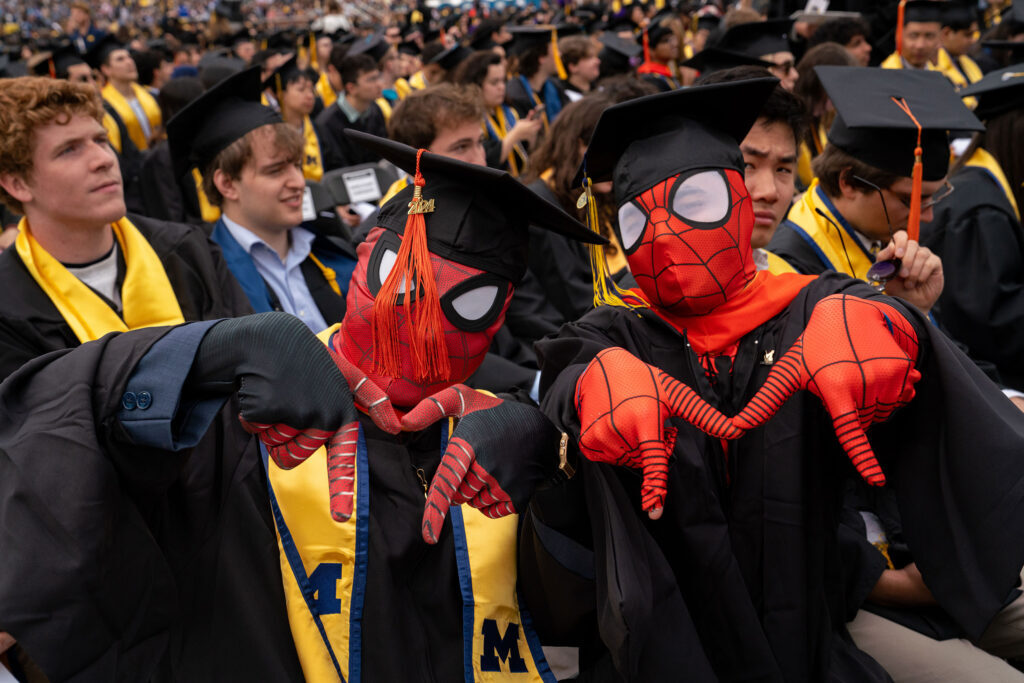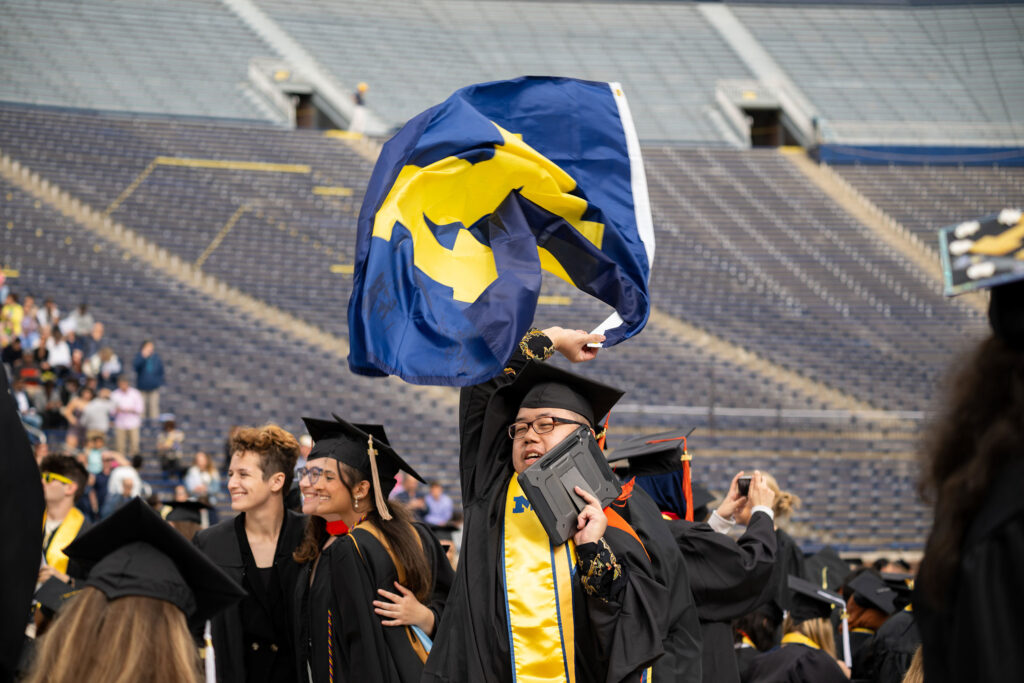‘The Michigan’s’ mighty comeback

A new ESPN documentary from Jon Fish, BA ’95, documents the trajectory of Mike Legg’s heart-stopping play that secured the 1996 NCAA title for Red Berenson’s Wolverines. After fading into obscurity for nearly three decades, Legg’s move ‘the Michigan’ is back with a vengeance, changing the game at every level.
-
Echolocating bats and whales share molecular mechanism
Over the course of evolution, bats and whales acquired echolocation abilities independently, for use in very different environments, so you’d expect the means by which each accomplishes the feat to differ. But a new U-M study suggests that at the microscopic level, the molecular structures for both species are very similar. It’s a striking discovery that overturns conventional thinking in evolution.
-
Lullabye, in a test tube
Gently rocking embryos while they grow during in vitro fertilization (IVF) improves pregnancy rates in mice by 22 percent, new University of Michigan research shows. The procedure could one day lead to significantly higher IVF success rates in humans.
-
Sustainable mobility
Automakers at the 2010 North American International Auto Show have big hopes for their new vehicles—hipper, more fuel-efficient, environmentally sound cars.
-
The Del Rio: Hippie hotbed
Second home to radicals, hipsters, jazz lovers, rock stars, nudists, DetBurgers, giant burritos and the Midwest’s most hostile waitstaff, the Del Rio bar embodied countercultural Ann Arbor—until it finally outlived its times and closed. In this book excerpt, the Del’s former owner Ernie Harburg remembers when Ann Arbor was a very different place.
-
Top sports moments of the decade
What were the biggest games, the most impressive performances, the best Wolverine teams of the ’00s? Sportswriter John U. Bacon makes his picks. What are yours?
-
Back to his roots
After graduation, Karl Rosaen moved from Michigan to Silicon Valley, where he worked on the now-famous Google Android phone. So when he wanted to start his own high tech firm, where did he go? Back home to Michigan, of course. A story about hope for a new economy.
Columns
-
President's Message
Resilience, determination, commitment, and commencement
Let's celebrate our newest Michigan alumni, some extraordinary faculty, and the new permanent chancellor at UM-Flint. -
Editor's Blog
What’s the story?
Storytellers know there's always more to the tale than the page can contain. -
Climate Blue
Leveling up in Floodtown
Ricky Rood is taking us to Floodtown, where water levels are rising and 'cryin' won't help you.' -
Health Yourself
I can see clearly now. Can you?
To see or not to see: That is the question for Victor Katch... and us.
In the news
It’s only the beginning
More than 8,500 graduates attended Spring Commencement May 4, their seats filling the field at Michigan Stadium. They were surrounded by thousands of joyful family, friends, and supporters. Commencement speaker Brad Meltzer, BA ’92, a best-selling writer (fiction, non-fiction, comic books, and television) encouraged students to commit the most radical act imaginable by “unleashing your kindness.” The commissioning ceremony was interrupted by approximately 75 pro-Palestinian protesters who gathered at the rear of the student section and moved down the center aisle, waving flags and chanting, “Disclose. Divest. We will not stop. We will not rest.” After about 15 minutes, the demonstrators moved to the back of the stadium — guided by officers — and the program continued. Read the complete story and see more photos at The University Record.

















